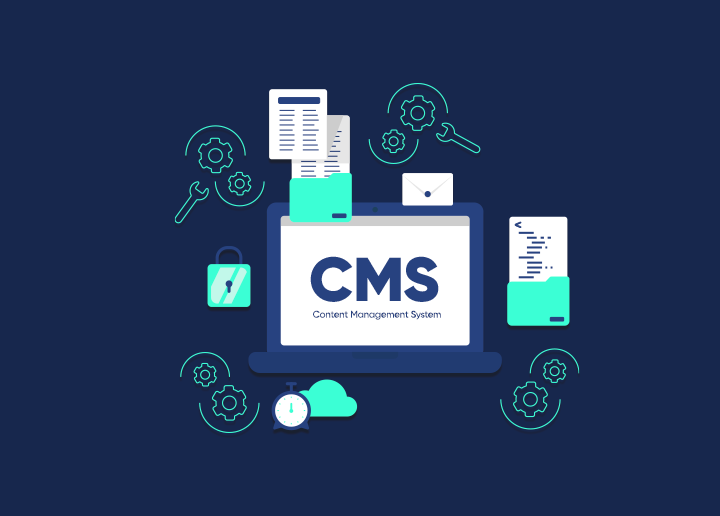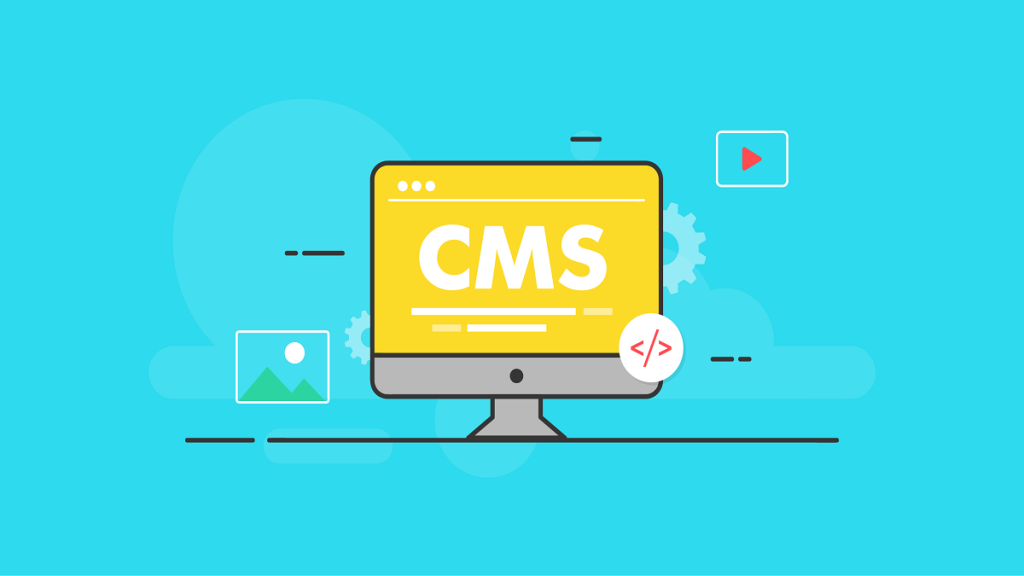A key component of customer experience (CX) is content. Companies own enormous repositories of material, but it has to be arranged to provide superior experiences. By enabling users to generate, edit, optimize, and distribute information to the appropriate audiences on the appropriate channels at the appropriate times, the benefits of a content management system (CMS) let organizations go beyond simple content organization.
A CMS is essential because it makes meaningful digital experiences possible. Naturally, a content management system (CMS) isn’t a one-size-fits-all solution since every company has unique content needs and objectives. All of the advantages we’ve listed here, however, should come in handy when determining if your company should buy a CMS or upgrade to a more recent one.
Why Organizations Should Use CMS

1. User-Friendly Interface
One of the primary benefits of a content management system is its user-friendly interface. Most CMS platforms are designed with non-technical users in mind, allowing individuals with minimal technical skills to create and manage content easily. This accessibility empowers team members to contribute to content creation without needing extensive training in coding or web development.
Benefits:
- Quick Onboarding: New users can quickly learn how to navigate the system, reducing the time needed for training.
- Increased Collaboration: A user-friendly interface encourages more team members to participate in content creation, enhancing collaboration.
2. Streamlined Content Creation and Editing
A CMS provides tools that simplify the content creation and editing process. With features like WYSIWYG (What You See Is What You Get) editors, drag-and-drop functionalities, and templates, users can produce high-quality content efficiently.
Benefits:
- Faster Publishing: Content can be created and published swiftly, allowing for timely updates and engagement with your audience.
- Consistent Formatting: Templates and styling options ensure a consistent look and feel across all content, enhancing brand identity.
3. Improved SEO Capabilities
One of the advantages of using a CMS platform is that a good CMS comes equipped with built-in SEO tools that help optimize content for search engines. Features like customizable URLs, meta tags, and image alt text make it easier to enhance your content’s visibility online.
Benefits:
- Higher Search Rankings: By optimizing content effectively, you can improve your search engine rankings and drive more organic traffic to your website.
- Analytics Integration: Many CMS platforms integrate with analytics tools, allowing you to track the performance of your SEO efforts and make data-driven decisions.
4. Version Control and Content History
Version control is a vital feature of many CMS platforms, enabling users to track changes made to content over time. This functionality allows for easy recovery of previous versions and keeps a history of edits.
Benefits:
- Error Recovery: If mistakes are made, users can revert to earlier versions of content, minimizing disruption and maintaining content quality.
- Transparency: A clear edit history provides insight into who made changes and when promoting accountability among team members.
5. Enhanced Security Features
Security is a paramount concern for any online platform and one of the benefits of a content management system. A CMS typically includes robust security measures to protect sensitive data and content from unauthorized access and cyber threats.
Benefits:
- User Access Control: Administrators can set permissions, ensuring that only authorized personnel can access certain content or features.
- Regular Updates: CMS providers often release updates to address security vulnerabilities, helping to safeguard your website.
6. Scalability and Flexibility
As businesses grow, so do their content needs. A CMS offers the scalability and flexibility required to accommodate increasing amounts of content and users without compromising performance.
Benefits:
- Adaptable to Growth: Organizations can add new features, content types, and users as needed, ensuring the CMS continues to meet their evolving requirements.
- Integration Capabilities: Many CMS platforms support third-party integrations, allowing users to enhance functionality with additional tools and services.
7. Multichannel Publishing
One of the advantages of using a CMS platform is that it enables users to publish content across various platforms and channels, including websites, social media, and email newsletters, from a single interface.
Benefits:
- Broader Reach: By distributing content across multiple channels, businesses can reach a wider audience and engage with users in diverse ways.
- Content Repurposing: A CMS makes it easy to adapt existing content for different formats and platforms, maximizing the value of your content assets.
8. Analytics and Reporting Tools
Understanding the performance of your content is essential for making informed decisions. Most CMS platforms offer integrated analytics and reporting tools that provide insights into user behavior, traffic sources, and content performance.
Benefits:
- Data-Driven Decisions: Access to real-time analytics allows organizations to refine their content strategy based on what resonates with their audience.
- Improved Engagement: By analyzing user interaction with content, teams can identify trends and tailor future content to better meet audience needs.
9. Cost-Effectiveness
Investing in a CMS can be a cost-effective solution for content management. By streamlining processes and reducing the need for technical expertise, organizations can save time and resources.
Benefits:
- Reduced Development Costs: A CMS minimizes the need for ongoing web development support, allowing teams to manage content independently.
- Efficient Resource Allocation: By automating various aspects of content management, organizations can allocate resources more effectively, focusing on strategy and creativity rather than mundane tasks.
Content Management Strategy Wireframing
There are several components involved in creating a content management strategy, and each one is essential to the effective implementation of your content strategy if you have yet to embrace the benefits of a content management system. Let’s take a closer look at these elements:
Kind of content: Choosing the kind of content you want to produce is the first stage in any plan. This might include infographics, videos, seminars, blog posts, and tutorials. The kind of material you choose should support your overall company goals, connect with your audience, and be consistent with your brand’s basic values.
Working title: Throughout the process of creating material, a working title provides direction. It aids in maintaining the organization and focus of your material, ensuring that it remains on course and successfully conveys the desired message.
Customer personas: It’s essential to create client profiles to target your content to the appropriate audience. These personas serve as representations of your ideal clients, assisting you in comprehending their requirements, tastes, and habits so that your material will captivate readers and encourage interaction.
Certain keywords: When it comes to bringing readers to your material, keywords are essential. Finding and using relevant keywords expands the audience for your content by increasing its search engine exposure and bringing in more organic traffic.
State of content: Monitoring the progress of your material is crucial to effective project management. Keeping everyone informed on the state of your material, regardless of its stage of development—research, writing, editing, publishing, or promotion—ensures that everyone is working toward the same goals.
Content producer: Having a writer assigned early on in the process facilitates the organization of workloads and projects. It guarantees that the writer will have enough time to comprehend the content specifications, do the required research, and produce interesting material that complies with the message and tone of voice rules of your business.
Date of the draft submission: Establishing a deadline for the draft helps to keep the content production process on track. It facilitates task management, avoids last-minute rushes, and provides enough time for edits and comments.
Editor of content: In order to ensure that the information is clear, succinct, and error-free, the editor is essential. An editor is more likely to understand their roles and the project schedule if they are assigned early on.
Modifies the deadline: Establishing a precise deadline for modifications makes it easier to guarantee that feedback is sent on time. This enables the information to be revised as needed before it is published.
Date of publication: Setting a publishing date gives your timeframe for content development structure. You can make sure every step of the content development process is finished on schedule by working backward from this date.
Where the publication is located: To reach your target audience, you must decide where to post your material. This might be the blog, social media pages, email newsletters, or website for your business. The publishing venue you choose should complement both your entire content distribution plan and the preferences of your audience.
Pictures: Adding pertinent photos, infographics, or videos may make a big difference in your material. Incorporating visual components into your material not only enhances its engagement value but also simplifies the presentation of difficult information.
FAQ
Q: In what ways can content management aid in product promotion?
A: Using a content marketing approach, companies may interact with their target consumers more successfully. Marketers may draw in and hold onto their audience’s attention by producing insightful and timely content. Increased consumer loyalty, brand exposure, and eventually conversions may result from this involvement.
Q: What effect will CMS have on you going forward?
A: To grow your company, you need a strong content management system (CMS) that allows you to change your website whenever you want, in addition to staying current with digital technology improvements.
Q: Why are CMS packages used?
A: You may develop, manage, and publish material on the web with the use of a content management system. In order for material to be properly utilized and recycled, it also aids in keeping it accessible and structured. To satisfy the needs of any audience, there are several types of content management systems accessible, ranging from cloud-based to headless CMS.







